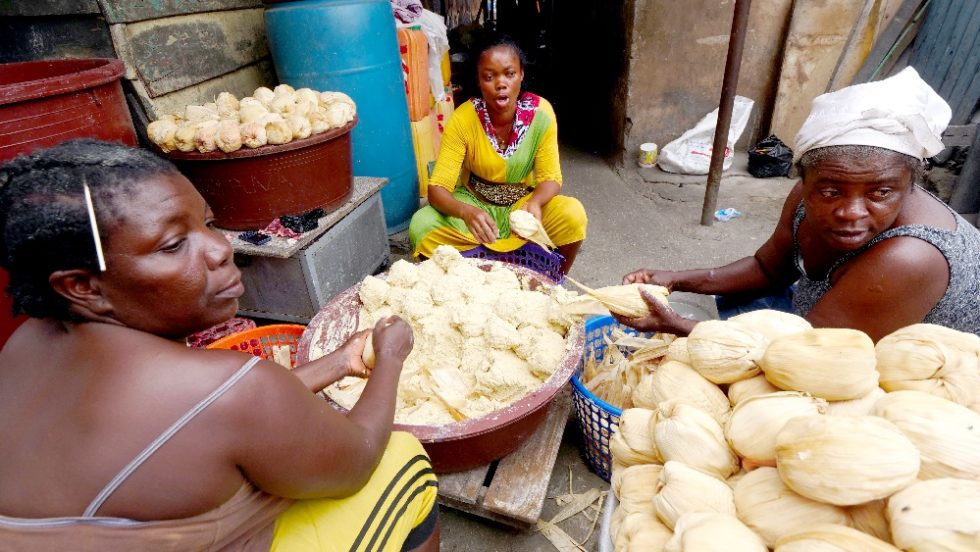“A healthy lifestyle starts from the inside” Robert Urich.
My craving for a good heavy afternoon meal got me into getting a ball of Ga kenkey with red chilly pepper and some cassava fish to satisfy my hunger for the afternoon.
The food was neatly wrapped for me and I sped off to the office to comfortably sit and enjoy not just an afternoon meal but a meal I craved to have that day.
At my first attempt to enjoy the tempting kenkey, I spotted a strand of hair in it but because I was eager to eat, I pulled the hair out of the kenkey and started eating it. On my second attempt to reach out to the pepper with my kenkey in hand, I again spotted a red rubber band in the pepper and this took away my appetite completely and got me asking, how did the strand of hair and the rubber band find its way into the kenkey?

This experience is not peculiar to me as many others who for one reason or the other, have to take at least a meal outside the home. Most workers across the country find themselves in situations as enumerated earlier and are compelled to buy from all manner of vendors at a more affordable price regardless of the ambience (dirty, unkempt, smelly etc).
Most people preferably would have loved to prepare food from home and warm it for lunch but are unable to do so. According to some workers, the feeling of having a different taste away from home, just for a change is another compelling reason for which eating outside the home has become attractive.
Every morning, men and women alike, struggle in long queues just to satisfy their need for food. These you can site at popular waakye, banku, red red (gobε) and fufu joints across the country.

Generally, there have been improvements in the preparation and selling of food across the country but there is still much to do as many times the conditions under which some street vendors operate are unsuitable for the preparation and selling of food. The food is normally prepared either at home or at stalls which are located on the side of streets and even under trees, on top of huge undesilted gutters, near public places of convenience, refuse dumps, public urinary and sometimes very dusty environments making the food collect either dust and sand, germs and bacteria of all kinds.
The uncovered hair and long wigs also find their way into the foods and preparation surfaces used by most vendors, while the remains of food prepared on previous days also find their way back into the food for the day, not forgetting about the flies which travel from all manner of places and distances to leave their residues on these foods to further promote contamination and inflict harm on consumers.
Foreign materials such as rubber bands, razor blades, pins and sharp inedible objects find their way into the food because most of the cooking may have been done at dawn in poorly lit areas and also because of the rush to finish early. The commercial nature of cooking such foods also makes it difficult to engage in thorough checks leading to all sorts of substances mistakenly added and cooked alongside.
Many vendors congregate in overcrowded areas such as the fitting or auto mechanic shops, schools and hospitals where there are high numbers of potential customers with limited access to basic sanitary facilities such as toilets, washrooms, disposal sites and changing rooms, thus ending up contaminating street foods. This is often linked to the waste generated by the food processing that is usually dumped near vending sites and chocked gutters that are also covered with wooden materials harbouring intense heat that finds its way into cooked food as well as liquid waste and garbage disposal mostly water thrown into nearby streets and gutters.

Governments over the years have played very important roles through the assemblies to institute by-laws to regulate the activities of these food vendors with the Accra Metropolitan Assembly indulging for example in strict monitoring to ensure adherence but with very little positive results. Much more effort is required to properly regulate the activities of these groups of people to help foster a healthier life for citizens.
Proper certification from appropriate authorities should not be taken for granted while consumers insist on the quality of what they buy and not quantity. Vendors, especially women, should have their hair covered before, during and after the preparation of food, education from both public health personnel and consumers with strict continuous monitoring and adherence ought to be initiated to ensure the safety of the Ghanaian street-eating public.

While the vendors are required to undertake conscious and consistent hygienic approaches in the preparation of street food, consumers are also encouraged to take necessary steps to ensure the consumption of safe food, reminding ourselves of the “you are what you eat“ popular saying to keep up health and stay safe to elicit longer life expectancy ratios for national development.
Has the Food and Drugs Board had any role to play since this falls within the food safety arena? And what have they to say or do to make the situation better off?
We must eat for health and not only for satisfaction.


































































